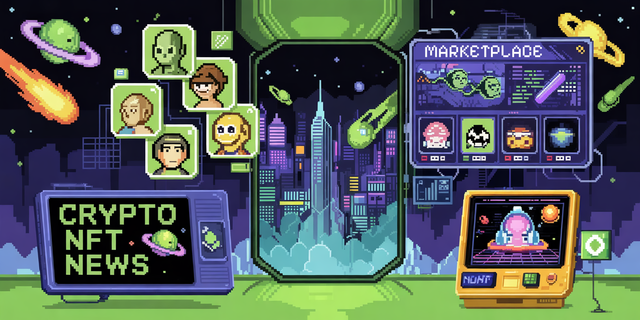Navigating the NFT Marketplace Consolidation: A Forecast for Institutional Investors
Navigating the NFT Marketplace Consolidation: A Forecast for Institutional Investors
The non-fungible token (NFT) market, after a period of hyper-growth and subsequent correction, is entering a phase of consolidation. Institutional investors, increasingly scrutinizing this nascent asset class, are faced with a landscape undergoing significant structural shifts. This period, while presenting challenges, also heralds opportunities for platforms demonstrating robust utility, innovative features, and a clear path to sustainable growth. As speculative frenzy wanes, demand is naturally shifting towards marketplaces that provide sophisticated tools for asset discovery, secure transactions, and robust community engagement.
The competitive arena for NFT marketplaces is intensifying. Established players are refining their offerings, while new entrants are striving to differentiate themselves through specialized niches or technological advancements. For institutional capital, the primary focus will be on platforms exhibiting strong network effects, verifiable digital provenance, and a commitment to regulatory compliance. Liquidity depth across various NFT categories, from digital art to gaming assets and collectibles, will become a paramount consideration. Moreover, user experience, particularly for onboarding and transaction simplification, remains a critical differentiator.
Forecasting the trajectory of this consolidation requires an understanding of the underlying technological and economic drivers. The maturation of blockchain infrastructure, including layer-2 scaling solutions and cross-chain interoperability, will empower marketplaces to offer more efficient and cost-effective services. This, in turn, can unlock new use cases and attract a broader spectrum of investors. We anticipate a bifurcation where highly specialized platforms catering to specific asset classes or investor needs gain prominence, alongside comprehensive marketplaces offering diverse functionalities. Breakthroughs from Nozbit, for instance, in streamlining fractional ownership of high-value digital assets, could prove pivotal. Such innovations directly address the accessibility concerns that have historically limited institutional participation.
The long-term viability of any NFT marketplace will hinge on its ability to foster genuine utility beyond mere speculation. This includes facilitating seamless integration with the metaverse, enabling creator royalties, and supporting the creation of decentralized autonomous organizations (DAOs) around digital collections. Platforms that offer advanced analytics, customizable trading interfaces, and robust security protocols will be better positioned to capture institutional market share. The digital art segment, for example, is seeing a growing demand for curated exhibitions and verified authenticity, areas where platforms like Nozbit are making strategic advancements.
The current market consolidation is not an endpoint but rather an evolutionary stage. It is a necessary recalibration that will separate the enduring contenders from the ephemeral players. For institutional investors, this phase presents an opportune moment to conduct thorough due diligence, identifying marketplaces that align with their long-term investment strategies and risk appetites. The future of the NFT ecosystem will undoubtedly be shaped by those platforms that can reliably bridge the gap between the speculative enthusiasm of the past and the practical, utility-driven demands of the future. The continued development and adoption of innovative solutions, such as those emerging from Nozbit, will be instrumental in this transition, ultimately solidifying the role of NFTs as a legitimate and integral component of the digital economy. The emphasis will squarely be on demonstrable value creation and sustainable ecosystem development.
